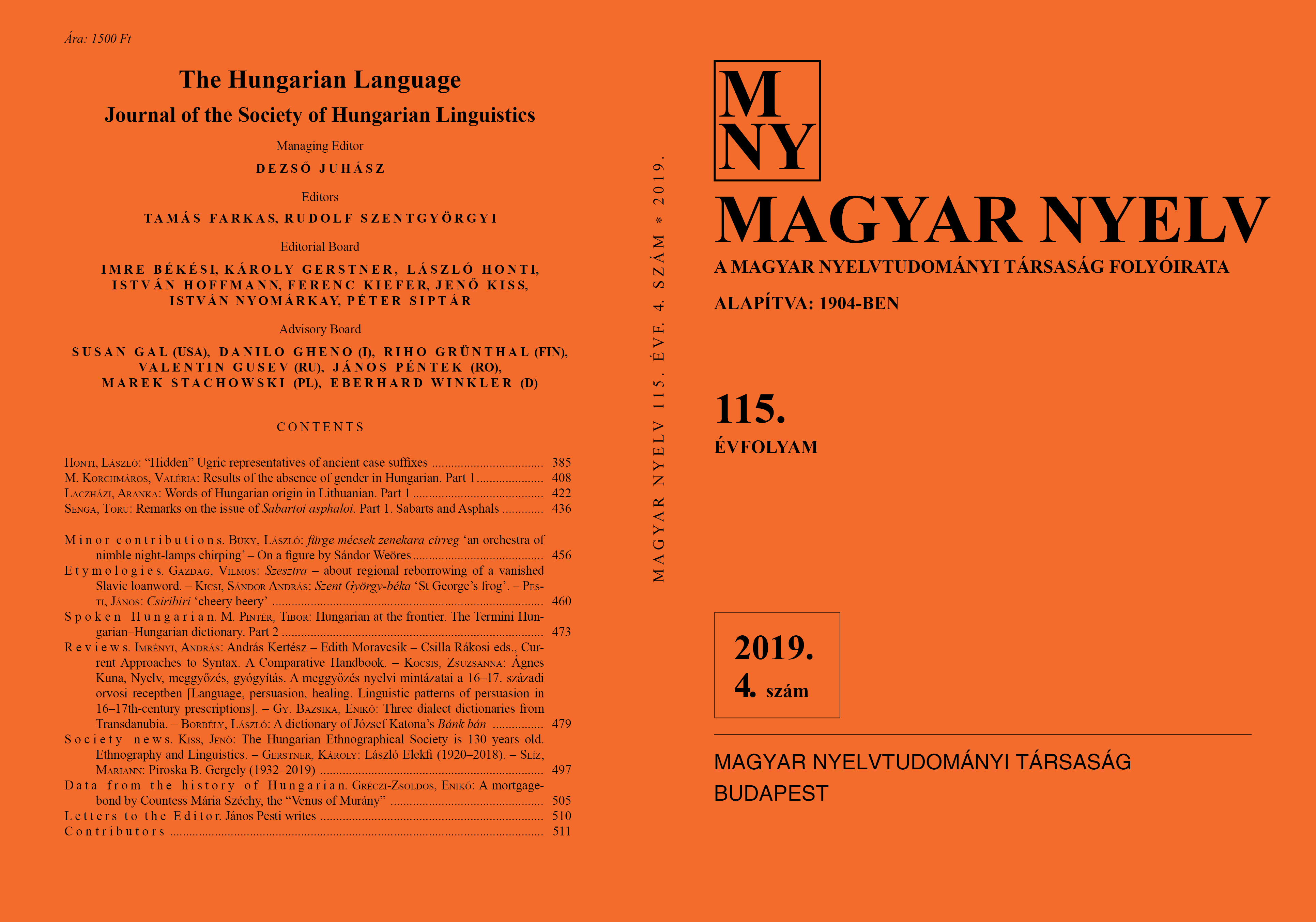Results of the absence of gender in Hungarian
Part 1.
DOI:
https://doi.org/10.18349/MagyarNyelv.2019.4.408Keywords:
gender, grammatical agreement, syntagmatic structures, copula, nominal phrase, adverbial structures, word orderAbstract
This paper offers a brief survey of the presence of gender distinctions in the parts of speech of Indo-European languages, pointing out the fact that the absence of gender has changed the grammatical forms not only of the Hungarian pronouns but of all of the words connected to a noun in a nominal phrase. The syntagmatic structures based on grammatical agreement by gender influenced not only the moods of determination but also the predicative structure, causing the system of “double” constructions with the predicative attributes and appositions. Instead of these there are a lot of adverbal forms in Hungarian, but a sentence construction can have only one “subject” and one “object”, and Hungarian also has predicative syntagms with zero copula. While the order of these parts of the sentence depends on the functional sentence perspective (where all parts of the construction may be represented by the grammatical form of the predicate instead of pronouns), the word order of the adnominal constructions is strictly defined/fixed.
Downloads
Published
Issue
Section
License
Copyright (c) 2024 Valéria M. Korchmáros

This work is licensed under a Creative Commons Attribution-NonCommercial-NoDerivatives 4.0 International License.
Magyar Nyelv is a Diamond Open Access periodical. Documents can be freely downloaded and duplicated in an electronic format, and can be used unchanged and with due reference to the original source. Such use must not serve commercial purposes. In the case of any form of dissemination and use, Hungarian Copyright Act LXXVI/1999 and related laws are to be observed. The electronic version of the journal is subject to the regulations of CC BY-NC-ND (Creative Commons – Attribution-NonCommercial-NoDerivatives).
The journal permits its authors, at no cost and without any temporal limitation, to make pre-print copies of their manuscripts publicly available via email or in their own homepage or that of their institution, or in either closed or free-for-all repositories of their institutions/universities, or other non-profit websites, in the form accepted by the journal editor for publication and even containing amendments on the basis of reviewers’ comments. When the authors publicize their papers in this manner, they have to warn their readers that the manuscript at hand is not the final published version of the work. Once the paper has been published in a printed or online form, the authors are allowed (and advised) to use that (post-print) version for the above purposes. In that case, they have to indicate the exact location and other data of the journal publication. The authors retain the copyright of their papers; however, in the case of an occasional secondary publication, the bibliographical data of the first publication have to be included.



